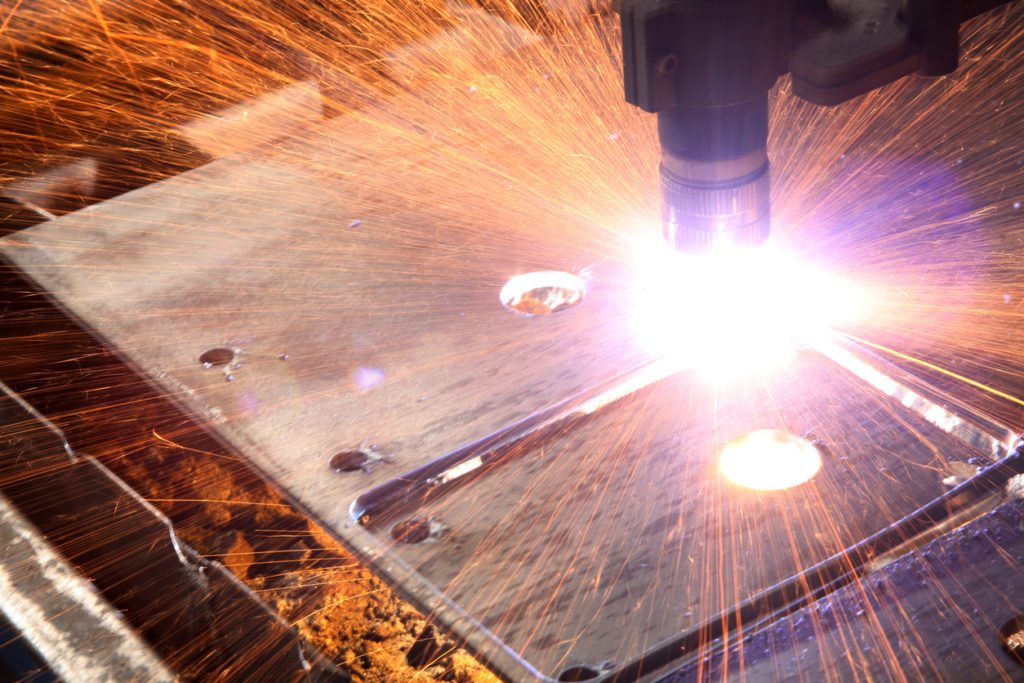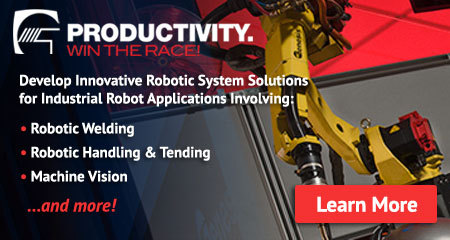Laser Welding Has Key Advantages in Certain Applications
 Laser welding has proven to be a highly successful investment for a number of manufacturers, reducing post finishing processes and cycle times while creating productivity and return on investment (ROI). In certain applications, it can prove to be extremely valuable when compared to other forms of robotic welding, such as resistance welding or MIG welding.
Laser welding has proven to be a highly successful investment for a number of manufacturers, reducing post finishing processes and cycle times while creating productivity and return on investment (ROI). In certain applications, it can prove to be extremely valuable when compared to other forms of robotic welding, such as resistance welding or MIG welding.
But how do you know when it is right for your application? What kinds of advantages does it have over other robotic welding processes?
Laser Welding Advantages
Laser welding holds a number of advantages, depending on the needs of your application. It has a very low heat affected zone and rapid cooling after welding, meaning the surrounding material is never annealed. There is rarely any part deformity or integrity issues because there’s no mechanical stress put on the part during the welding process.
Laser welding works on several different types of metal and is extremely accurate, reaching parts that are inaccessible to other types of welding without touching the material at all. It is also highly controllable and there’s little scrap involved.
Common Laser Welding Applications
The common applications highlight many of its benefits. These applications include:
- Precision Parts Welding: accuracy and minimal heat generation allow for welding of thin or delicate metal components.
- Medical Devices: as the process doesn’t create material contact or splatter, it ensures consistent cleanliness for medical devices that need to remain sanitary.
- Limited Access: since laser welding doesn’t need to touch the part, it can weld remotely from over a foot away from the part. This allows it to reach hard-to-weld places that traditional processes cannot.
Laser welding processes can also be used in heavy industrial settings, for parts like industrial oven doors, drive train gears, exhaust heat shields, stainless steel appliances and many more. The applications listed above highlight the accuracy, low heat and high performance this solution provides.
Laser welding may not work for every application, but for some applications it’s a necessity due to the nature of the part. In the right setting, this form of robotic welding can deliver productivity and quality beyond more traditional robotic welding processes.
Check out Genesis’ VersaLaser pre-engineered robotic welding workcell to see real world laser welding equipment.
Posted in Laser Welding

That is really cool that laser holds a number of advantages. I didn’t know that it has a very low heat affected zone and had rapid cooling after welding. I know that my husband has really been into different types of welding. I wonder if he has done laser welding before.
I like what you said about laser welding not needing to touch the part, so you can do it from over a foot away from the part. My husband needs to weld some parts on one of his projects and I’m wondering if we need to get laser welding equipment. Thank you for the information about how this process allows one to reach hard-to-weld places that traditional processes can’t.
I didn’t realize that using lasers for welding fabrication meant that you could work on thinner pieces. This seems like it would be really helpful for computer parts or even car parts. That way you don’t have to worry about putting in ruined pieces or something like that.